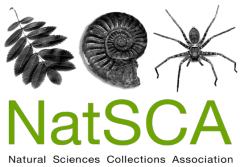Research and Curatorial Assistant (Anthropology and Mammals)
The Natural History Museum is one of the world’s leading museums, internationally recognised for its dual role as a centre of excellence in scientific research and as a leader in the presentation of natural history through exhibitions, public programmes, publications and the web.
The Earth Sciences Department holds collections and researches areas relating to the origins of the planet, the earth’s resources and the evolution of life. The department also houses the Anthropology collections, which include the modern human remains collection of approximately 20,000 individuals, comprised mostly of skeletal remains, and the Fossil Mammal collection. The latter collection comprises over 250,000 specimens, with key British Pleistocene sites well represented.
The successful candidate will assist with a Calleva funded project exploring childhood development and health in past populations using human skeletal assemblages. Responsibilities will include data collection and documentation including osteological recording, 3D imaging, radiography, photography, and sample preparation. In addition, the successful candidate will provide curatorial support for other Calleva-funded work in the department, including imaging and documentation using spreadsheets and the museum’s collections management system (KE-EMu).
This is a 3 years full time position, funded by the Calleva Foundation.
Salary: £24,500 per annum plus benefits
Contract: 36 months fixed term contract
Closing date: 9am on Friday 22 April 2016
Role competences:
BEFORE beginning your application - Please read the section below about the ‘Online Application Process’ carefully.
If you wish to be considered for this role you will need to address each of the following competences in the ‘other information’ section of your online application:
1. Degree in a relevant subject or related discipline
2. Postgraduate qualification with a substantial human osteology / physical anthropology component
3. Expertise in human osteology
4. Experience with, and ability to, handle fragile archaeological/ palaeontological materials
5. Experience of imaging techniques such as laser and CT scanning, radiography and/or microscopy
6. Good photographic skills including post-processing of images
7. Understanding of taxonomic and stratigraphic principles and an ability to recognise basic terms
8. Excellent attention to detail, with ability to undertake methodical tasks to a high-level of accuracy
9. High degree of competence in Microsoft Excel, Outlook and Word and demonstrable experience of using databases (ideally general and specialist collections management software)
10. Well organised with effective time management skills and an ability to complete multiple tasks within tight deadlines
11. Good interpersonal skills with the ability to work well both within a team and on own initiative, and communicate to a variety of different audiences.
